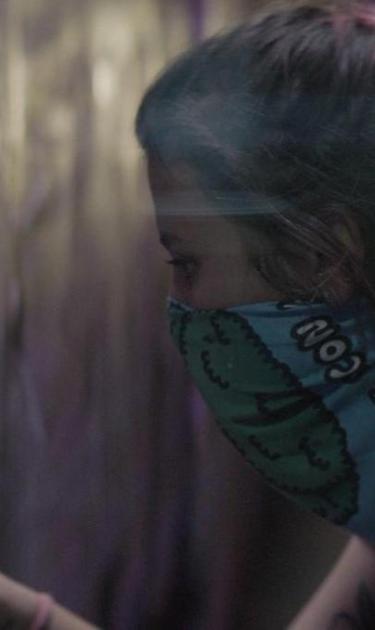Love and art blooms in the urban realism of Los días de la ballena (Days of the Whale), the first feature by Colombian writer-director Catalina Arroyave Restrepo. A coming-of-age romance that doubles as a story about the politically defiant power of art, this new picture made its debut at the SXSW Film Festival where it garnered a special mention from The Cherry Picks awards panel.
It follows the misadventures of Cristina (Laura Tobón) and Simon (David Escallón), close friends edging on lovers that belong to a local street art collective, la selva, and who spend their days scouting out new locations to paint and experiment with their art. Set in the valley highlands of Medellín, Simon’s parents are inexplicably absent. But despite his rebellious posturings, he’s not on his own: he lives with his lenient but warm grandmother in her humble abode in a less affluent part of the city.
Cristina on the other hand is of a more privileged pedigree. When her journalist mother must leave the city after receiving death threats for her reporting on local gang activity, Cristina moves in with her father and his younger wife in order to finish out her degree at the university. But Cristina – her hair dyed with a streak of pink, her arms and legs bedazzled with small tattoos – isn’t interested in studying. Alongside Simon, she wants to paint her magnum opus, a labor-intensive whale mural, on the open wall across from la selva’s headquarters. But when the neighborhood gangsters use that wall to issue a threat against the group in big bold letters, Cristina and Simon must decide whether they will heed the warning or go through with their project in protest.
While certainly informed by the resurgence of rival gang violence in the unpoliced working class barrios of present-day Medellín, Los días de la ballena refreshingly moves beyond the stereotypical depiction of the city as merely the former home of Pablo Escobar. In reality, Medellín is largely past these particularly dark times. Thanks to various social welfare projects, and transportation improvements that have helped discourage that level of criminal activity, the city has seen a healthy upturn in tourism and is considered one of Colombia’s booming art and cultural destinations.
Restless handheld cinematography presents the movie as lo-fi social realism. The appearance of a whale in the narrow river that runs through the city, however, punctuates this mood with glances of magical realism – though the characters never acknowledge this strange phenomenon. Such an artistic touch pays tribute to the country’s Marquez-inspired literary tradition that other Colombian filmmakers so heavily rely on, but for Restrepo reads merely as a flourish.
Tobón is excellent as the apprehensively expressive Cristina, who is playful and confident in the context of her art, but otherwise, anxious about her personal relationships and the consequences of her decisions. Because it lacks the narrative complexity that would lend itself to a deeper character study, we’re left to draw conclusions about Cristina and Simon’s family history. Though this storytelling minimalism does encourage audiences to focus on the couple’s nuanced emotional journey – from the breezy long days and nights of creative expression and flirty banter, to the palpable fear of potential loss. The movie isn’t necessarily damaged by its simplicity, so much as contained by it. With lyrical, unrushed sequences basking in the artful, dance-like physical coordination required of street painting, there’s something to the spirit of Los días de la ballena that is comfortable, and ultimately satisfying, about its small-scale look at the lives of two passionate young people.
Los días de la ballena screened at SXSW.




